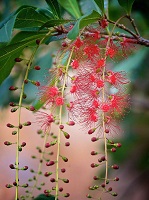Anti Inflammatory Studies of Barringtonia acutangula (Linn) Fruits on Wistar Rats.
Keywords:
Barringtonia acutangula, Anti inflammatory activity, AntioxidantsAbstract
The study aims to evaluate the anti inflammatory activity of Barringtonia acutangula (Linn) fruit extracts in wistar rats. In this study fruits of Barringtonia acutangula were extracted with ethanol and purified water, these extracts were subjected to preliminary phytochemical analysis to identify their phytoconstituents. The ethanol and aqueous extracts were evaluated in vivo by using acute inflammatory models like; carrageenan induced paw oedema and chronic models like; cotton-pellet induced granuloma and carrageenan induced air-pouch model in rats. The biochemical parameters like reduced glutathione (GSH), lipid peroxidation and catalase were also estimated as supportive studies. Acute toxicity studies were performed initially in order to ascertain the safety of ethanol and aqueous extracts. The ethanol extract reduced the inflammation more significantly than the aqueous extract in the carrageenan-induced rat paw oedema, cotton-pellet induced granuloma and carrageenan induced air-pouch model in rats. The phytochemical investigation of the ethanol fruit extract showed the presence of phytosterols, glycosides, flavonoids, alkaloids and carbohydrates. From the present study the ethanolic fruit extract of Barringtonia acutangula exhibited the anti-inflammatory effect by augmenting antioxidant defense system in the inflammation bearing rat, which is largely attributable to the additive or synergistic effect of its constituents.
References
Arrigoni Martelli E. Prostaglandins: Possible mechanism of anti-inflammatory drugs. In: Inflammation and anti- inflammatories. Spectrum New York, 1977; p. 177
Ialenti A, Ianaro A, Moncada S, Di Rosa M. Modulation of acute inflammation by endogenous nitric oxide. Eur J Pharmacol. 1995; 211: 177-184.
Jain SK. Dictionary of Indian folkmedicine and ethanobotany, National Botanical Research Institute, Lucknow, India, 1991; 33.
Sahoo TA. Antibacterial activity of Barringtonia acutangula Linn. against selected urinary tract pathogens. Indian J Pharm Sci. 2008; 70(5): 677-680.
The Wealth of India, A Dictionary of Indian Raw Materials and Industrial Products, 1 st Supplemental Series (Raw Material). Vol 1, A - Ci. New Delhi: National Institute of Science Communication and Information resources: CSIR; 1997. p. 118-21.
Insel PA. Analgesic- antipyretic and anti-inflammatory agents and drugs employed in the treatment of gout. In: Hardman J G, Limbird A E, Molinoff P B, Ruddon R W, Goodman and Gilman’s. The Pharmacological Basis of Therapeutics. McGraw- Hill, New York, 1996; p. 617- 657.
Samanta SK, Bhattacharya K, Mandal C. Pal BC. Identification and quantification of the active component quercetin 3-orutionoside from Barringtonia racemosa, targets mitochondrial apoptotic pathway in acute lymphoblastic leukemia. J Asian Nat Prod Res. 2010; 12(8): 639-48.
Rahman MM, Polfreman D, Mac Geachan J, Gray AI. Antimalarial activities of Barringtonia acutangula. Phyto Res. 2005; 19(6): 543-5.
Bhamarapravati S, Pendland SL, Mahady GB. Extracts of spice and food plants from Thai traditional medicine inhibit the growth of the human carcinogen Helicobactor pylori. In Vivo 2003; 17(6): 541-544.
Harborne, J.B. Phytochemical Methods: A guide to Modern Techniques of Plant Analysis, 2nd edition. London: Chapman and Hall, 1998, 282 p.
OECD, 2002. Acute oral toxicity. Acute oral toxic class method guideline 423 adopted 23.03.1996. In: Eleventh Addendum to the OECD guidelines for the testing of chemicals organisation for economical co-operation and development, Paris, June 2000.
Salvemini D, Wang ZQ, Bourdon DM, Stern MK, Currie MG, Manning PT. Evidence of peroxynitrite involvement in the carrageenan induced rat paw edema. Eur J Pharmacol. 1996; 303: 217-224.
Winter CA, Risley EA, Nuss GW. Carrageenin induced oedema in the hind paw of the rat as an assay for anti-inflammatory drug. Proc. Soc. Exptl. Biol. Med. 1962; 111: 544-547.
Moran MS, Defierre JW, Mannervik B. Levels of glutathione reductase and glutathione-s-transferase activities in rat lung and liver. Biochem Biophys Acta. 1979; 582: 67–78.
Cohen G, Dembiec D and Marcus J. Measurement of catalase activity in tissue extracts. Anal.Biochem. 1970; 34: 30–38.
Ohkawa H, Ohishi N, Yagi K. Assay of lipid peroxides in animal tissues by thiobarbituric acid reaction. Anal. Biochem. 1979; 95: 351-356.
Higgs GA, Moncada S, Vane JR. Eicosanoids in inflammation. Ann. Clin. Res.1984; 16: 287- 299.
Vane JR. Inhibition of prostaglandin synthesis as a mechanism of action for aspirin-like drugs. Nature New Biol. 1971; 231-235.
Hernandez PM, Rabanal Gallego R. Evaluation of the anti-inflammatory and analgesic activity of Sideritis anariensis var. pannosa in mice. J. Ethnopharmacol. 2002; 81: 43-47.
Castro J, Saseme H, Sussman H, Bullette P. Diverse effect of SKF 52 and antioxidants on CCL4 induced changes in liver microsomal P-450 content and ethylmorphine metabolism. Life Sci. 1968; 7: 129-136.
Della Loggia A, Tubaro A, Dri P, Zilli C, Del Negro P. The role of flavonoids in the anti-inflammatory activity of Chamomilla recutita. Clin. Biol. Res. 1968; 213: 481-486.
Alcaraz MJ, Jimenez MJ. Flavonoide, an anti-inflammatory agents. Fitoterapia. 1988; 59: 25-38.
Bhattacharya S, Pal S, Nag Chaudhauri AK. Pharmacological studies of the anti-inflammatory profile of Mikania cordata (Burm) B.L. Robonson root extract in rodents. Phytotherapy Res. 1992; 6: 255-301.
Swingle KF. Anti-inflammatory agents. In: Chemistry and Pharmacology. New York: Academic Press, 1974, Vol. 2, pp. 33-47.



